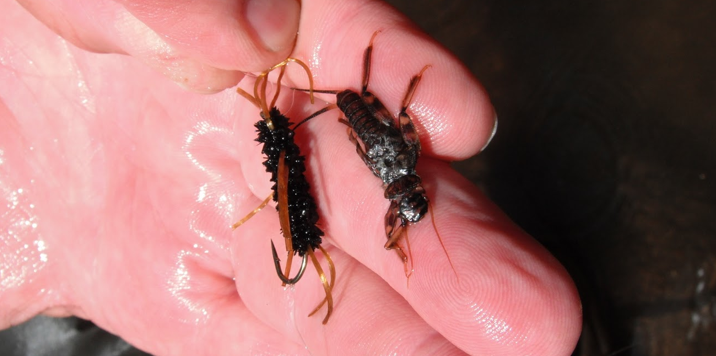While the winter time on the Missouri River still offers
solid fishing, I find myself taking more time during these shorter days to read
about, think about, and participate in tying flies. I don’t know if it’s cabin
fever, but at this time of year, I find myself drawn down into the mysterious
undercurrent of the sport and begin to contemplate questions that, dare I say,
verge on the theoretical. For instance, why have flies like the Royal Coachman
or its more buoyant cousin the Royal Wulff been responsible for so many fish
over the decades? These flies don’t imitate any particular hatch or insect. Lee
Wulff, the originator of the Royal Wulff, described his invention simply as
“strawberry shortcake.” Recently I’ve been rereading what I believe is the best
explanation to the effectiveness of this, and many other, attractor flies.
The answer lies in The Dry Fly: New Angles by Gary LaFontaine. In this excellent book, he proposes
a Theory of Color Attraction based on two suppositions.
“First, the ‘color’ of the surrounding
light affects the intensity of a fly’s color. And second, flies with ‘intense
colors’ attract trout (when trout are in the mood to be attracted).”
Let’s take a minute to think about these two statements a
little more. We’ve all noticed that the “color” of the surrounding light
changes. For instance, at sunrise or sunset, the light takes on an orange or
reddish color. When fishing around bankside vegetation, the light takes on a
greenish color. When fishing on overcast days, the light takes on a grayish
color. Fly patterns that incorporate the same color as the surrounding light
will absorb more light and therefore be more intensely colored in the eyes of
the fish.
Now, let’s get back to the Royal Coachman/Wulff. This fly
has a body or iridescent green peacock herl and a hot spot of red floss in it’s
middle. As we all learned in elementary school, the visible spectrum of light
(as seen in a rainbow) goes in the order ROY G. BIV: Red, Orange, Yellow,
Green, Blue, Indigo, and Violet. Thus, a fly that incorporates the colors red
and green spans the spectrum and has a pretty good chance of one color or the
other matching the color of the ambient light. Fish a Royal Wulff around
sunrise or sunset and the red hot spot will appear intensely to the fish. Fish
a Royal Wulff over a weedy bottom or under streamside vegetation and the green
peacock herl will appear more intensely.
So, what’s this mean for anglers on the Missouri River? This
is a hatch-matching river, right? A Royal Wulff won’t work here will it? Well,
check out this excerpt from Trout Flies: Proven Patterns, another book by Gary Lafontaine published in 1993 in which
he describes a pattern of his creation called the Double Wing that is very
similar to a Royal Trude:
Frank Obrist, guiding out of Great
Falls, wrote, “From 12:00 noon to 4:00 p.m. the Royal Double Wing was the best
fly on the Missouri River all summer. My clients racked up more big trout with
it than they did even with streamers, fish up to 6 ½ pounds. I kept saying to
myself, ‘Maybe it imitates this or maybe it imitates that.’ I couldn’t believe
that a pure attractor would work on the Missouri, but finally I had to admit
that it did.”
Will a royal attractor pattern work for you this summer?
There’s only one way to find out. As the new season
approaches, take some time this winter to have some fun and experiment with
colors, because learning and experimentation is what makes fly fishing so much
fun.
 |
| Here is a synthetic royal double wing tied by Parks' Fly Shop out of Gardiner, MT. |
























